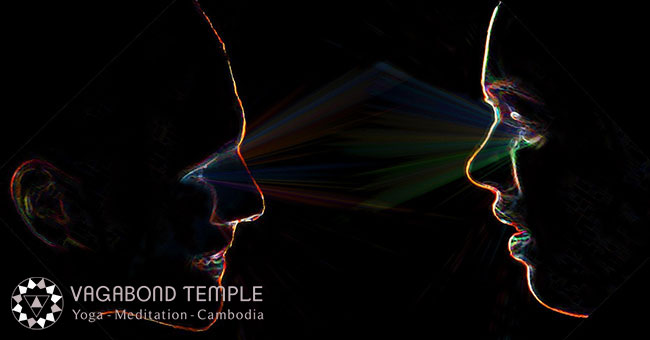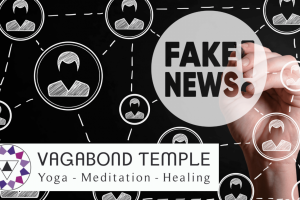When You Look At Another Person, What Do You Really See?
- Posted by Vagabond Temple
- Categories Life, Yoga in Daily Life
- Date April 22, 2016
- Comments 1 comment

If we closely watch our minds, we will find a tendency to label or categorize other people, based on our pre-existing ideas and standards. When you meet somebody for the first time what do you notice? Are they ugly or beautiful? Kind or rude? Interesting or annoying? Spiritual or materialistic? Conformist or unconventional? We may notice how they dress, how they speak. We may ask questions to find out what job they do, or what their interests are: trying to form a picture in our minds of what type of person they are. We may make positive or negative judgements based on our idea of this person. This process can happen so fast it is almost automatic: our minds are constantly trying to make sense of our surroundings, and the easiest way is to choose from our library of pre-conceived concepts. There is nothing necessarily wrong with this, it is simply a survival mechanism. But if we look a little deeper we may find something quite different from our initial picture of the other person.
“Those who cling to perceptions and views wander the world offending people.” The Buddha (Magandiya Suta)
The ancient Indian concept of Ishvara Pranidhana relates to the practice of being close to the divine: the collective oneness; that we are all part of. One way to practice this is through the process of transfiguration – seeing the divinity in other people. If we try to see the divine in the other, rather than whatever labels or pictures our mind has produced – we will not only learn to see it in ourselves but we will bring out best in the other person. Even if what we know about the person is correct on the surface level (they really do a certain job, they really do have a certain outlook on life, etc.) we should bear in mind that this person has come from a place of infinite potential but has been limited by their life choices and circumstances. We do not need to go as far back as ancient India to understand this concept of limitedness, in Western existential philosophy, people like Jean-Paul Sartre have pointed to this idea. He explained that people have limited themselves through their life choices and can always change – choosing from endless possibilities – however many of us have forgotten that we made these choices and that they can be changed. People are much more than their attributes, and thus identifying with the attributes is seen as a form of self-deception, or inauthenticity.
To practice transfiguration, we must try and look beyond the superficial nature of the person formed by our preconceived ideas, and their limited nature. This is no easy task, especially with people we are very close to such as family members – where we have spent many years building a complex and often emotionally charged picture of the person.
The situation is made even harder by the fact that we seem to be living in a society that thrives on looking for things that are wrong with people – with certain behaviors and actions increasingly being labeled as diseases or disorders. This may encourage us to see ourselves and others and defective in some way when, in actuality, to really SEE another person we need to focus on their strengths, rather than reinforce their supposed limitations. This is not something to be done out of sympathy, rather it is a matter of truth – all human beings do have infinite potential and are part of the divine wholeness.
One powerful way to cut through the superficial view of another person is to simply gaze into their eyes for an extended period of time; obviously, make sure you have their permission to do this or you will most likely just frighten them! Extended eye contact is quite unusual in our culture and for many an uncomfortable experience. Ancient Indian philosophy, along with other Eastern traditions, views the eyes as energy gates, and eye contact as a way of truly connecting with the essence of the other person. If you find somebody to try this with, once the initial awkwardness has passed you may notice many things. You may find you get to know the person on a much deeper level; as you go further you may see yourself reflected in their eyes. You may even start to forget that you are two separate people and experience the truth that you are both just parts of the same wholeness.
The Bhagavad-Gita is arguably one of the most influential spiritual texts of all time. In one beautifully described section, the warrior Arjuna looks into the eyes of Krishna and sees the entire universe reflected back. Although Krishna is identified as a divine figure, the real point of this exchange was to show Arjuna that he, too, is part of the divine whole, as are all human beings.
Even if concepts like divinity and oneness seem strange to you, seeing beyond the superficial view of the other and focusing on their strengths will bring many rewards, including a deeper connection with others and an expanded understanding of yourself. If we are really to move forward toward a more awakened and compassionate society there must be unity – the good news is that the unity is already there, we just need to learn to see it.
Like this article? Sign up to our newsletter to receive more!
You may also like
The Challenge of Modern Spirituality In today’s fast-paced world, spirituality often feels like navigating a labyrinth. Gone are the days of following a single tradition under one guru. Instead, modern seekers are met with a plethora of philosophies and practices. …
Cultivating a Healthy Body, Mind, and Spirit: A Holistic Approach to Essence Connection
Introduction In our journey through life, just like maintaining a house, our bodies, minds, and spirits require regular care and attention to thrive. Neglecting any aspect can lead to dysfunction and diminish our overall well-being. Let’s delve into the six …



1 Comment